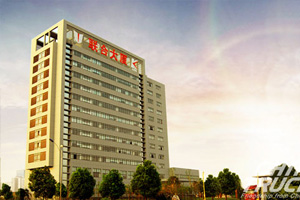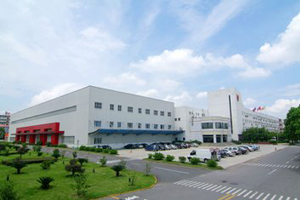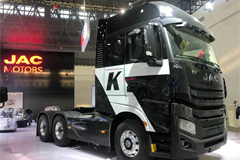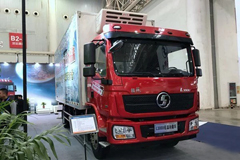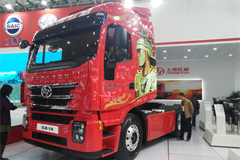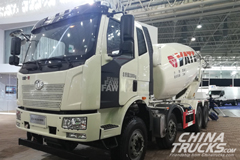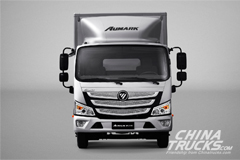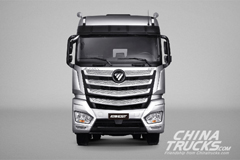ZF Outlines Vision for the Future
The future of trucking is driverless and electric if you ask the visionaries and executives of ZF.
At its Technology Day at its global headquarters in Friedrichshafen, Germany, June 27 Wolf-Henning Scheider, the company’s CEO, said automation will have a bigger role to play in commercial vehicles earlier than the passenger market.
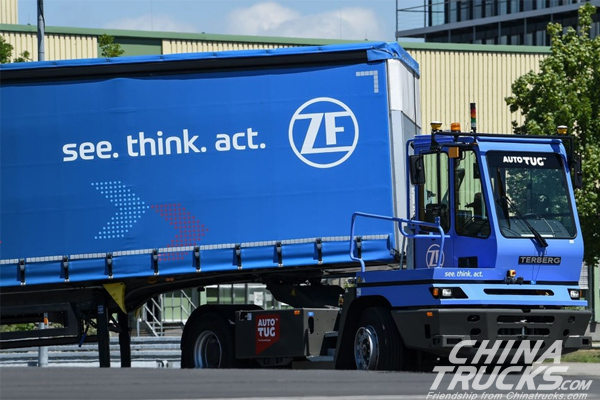
“We believe autonomous technologies will become standard in areas where they increase the operational security and reduce operational costs,” he said. “Here, the fruit is hanging lower because of immediate total cost of ownership benefits and less complexity.”
His vision for ZF’s future is one with reduced emissions and accidents. By 2025, Scheider anticipates a broad market penetration of electric drivetrains, saying that all-electric drivetrains could hit 20% penetration for medium- and heavy-duty vehicles.
The company gave trucking and logistics journalists from around the world a peek inside what is to come – that included a number of vehicles driving on their own in a contained space.
Autonomous trucks
The most popular display during ZF’s Technology Day was the autonomous station, where ZF showcased the potential of its Innovation Truck and terminal yard tractor.
The future-focused trucks moved, lifted, and stacked trailers and containers seamlessly around a fake yard and dock area without a driver behind the wheel.
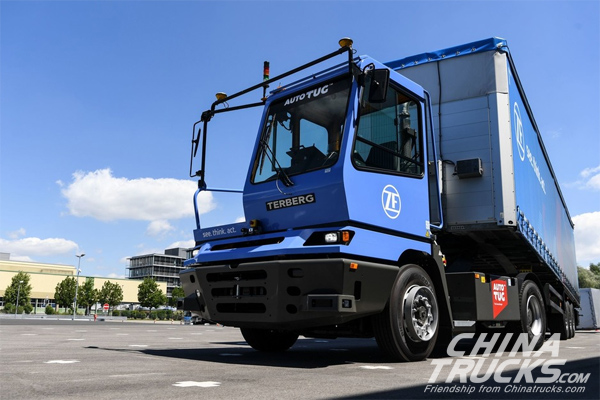
The motivation behind creating these vehicles that can move containers and park trailers effortlessly, is threefold, according to the company – it’s safer, it reduces downtime, and it solves the driver shortage problem.
“Autonomous vehicles that, thanks to our technologies, can see, think and act are turning the idea of consistent smart logistics into reality, at depots and other specified areas,” said Fredrik Staedtler, head of ZF’s Commercial Vehicle Technology Division. “These vehicles can prevent maneuvering damage and downtimes, which gives logistics companies a competitive advantage. The functions presented in our current innovation vehicles are therefore applications that are in high demand and pay off quickly.”
Scheider contends that difficult maneuvers, like lifting, shifting, and stacking are the tasks that experienced drivers and fleet managers alike loathe the most, because they lead to the most accidents and potential damage.
A smart routing system tells the innovation vehicles where and when to move and what to do when the autonomous mode is activated. The route is constantly monitored and a multitude of sensors allows the tractors to watch its surroundings and prevent collisions.
“Initially, we expect to see automated driving activities more commonplace on company premises and logistics depots, in harbors or in agricultural environments as operations there tend to be more recurrent and the surroundings are not too complex,” Scheiner added.
Last mile delivery
ZF also took the wraps off its concept vehicle for last mile delivery and logistics service providers, and allowed journalists to watch the electric van in action.
“Our Innovation Van is an extensive solution tailored to the requirements of the delivery sector,” said Gerhardt Gumpoltsberger, head of innovation management at ZF. “In order to meet the wide range of challenges of inner-city deliveries, we called upon our entire range of competencies – from autonomous driving and electromobility right up to networking within a smart support system.”
The van – what ZF calls a delivery vehicle on a virtual leash – was designed with urban delivery in mind, to recognize traffic lights and road signs and avoid obstacles. A cloud-based support system keeps data for each package on board, such as destination and preferred time of delivery, along with other information, such as the shelf life of perishable goods.
“The algorithm takes this information…and calculates the ideal delivery sequence in real time,” explained project manager Georg Mihatsch. “Basically, the parcel itself finds the best way to get to the customer – and the vehicle follows.”
The parcel courier, who rode in the passenger seat of the demonstration vehicles on Wednesday, receives this information via mixed reality smartglasses.
The van is also equipped with level 4 autonomous driving functions. It can react to sudden hazardous situations and such as vehicles double parked. No parking outside of an address? No problem. The courier can get out and make the delivery while the vehicle go ahead to find a suitable parking place.
There’s also an added bonus for customers who have their packages delivered with the system in that they have complete control over delivery time via the cloud support system. Customers who frequently buy the web will be happy to know they can not only track the parcel’s route, but also to change delivery data at short notice, such as redirect parcels to a particular neighbor at any time, or to push delivery time back if they are delayed by something unexpected.
This benefit is also of value to the courier, explained Gumpoltsberger, instead of waiting in van for the doorbell to be answered and possibly having to come back the next day, the courier can move on to the next delivery.
CeTrax plug and drive
Noting the importance of electrification, ZF also announced that it has expanded its portfolio of electric central drives. The CeTrax lite and CeTrax mid are all-electric plug and drive solutions designed for use in delivery vans, light commercial vehicles up to 7.5 tons as well as medium-duty commercial vehicles up to 19 tons, explained Scheider.
With these two solutions, ZF said it aims to serve further market segments in the future and support the industry on its way to local zero-emission driving.
“By using our CeTrax models’ plug and drive concept, vehicle manufacturers can reduce development and installation expenditures,” said Mark Mohr, head of development for Commercial Vehicle Technology at ZF. “With this new concept, ZF is addressing the needs of manufacturers or fleet operators who are planning to switch from existing conventional models to an electric driving mode.”
What’s unique about the systems, added Mohr, is the electric central drive’s integrated design, in which the electric motor, power electronics and transmission form a compact unit with a shared housing. This way, power electronics do not need to be wired separately with the electric motor, as this connection already exists within the unit. (www.chinatrucks.com)
Views:0
- Farizon Auto Sets Roadmap for Global Expansion 2024-09-26
- IAA 2024: ZF, Foton Expand Partnership to Hybrid Transmission for China Market 2024-09-17
- IAA 2024: ZF Further Expands Its Position as a Pacesetter of the CV Industry 2024-09-17
- TraXon 2 Hybrid, Hybrid Transmission by ZF to Be on Display at IAA 2024-09-11
- ZF, Farizon Sign Cooperation Agreement on New Energy Commercial Vehicles 2024-07-09
- Tan Xuguang: Shandong Heavy Industry to Strengthen Strategic Cooperation with ZF 2024-04-24
- ZF Receives Approval for Level 4 Autonomous Driving Test in Shanghai, China 2024-02-21
- Auto Shanghai: ZF Presents Cutting-edge Tech for Software-defined, Automated EVs 2023-04-19
- ZF Wins Major Business: E-Drives and ProAI Supercomputer Apps for CVs at IAA 2022-09-20
- ZF Posts H1 Sales Up 10% to EUR 21.2 Billion 2022-08-04
Submit Your Requirements, We Are Always At Your Service.
- FAW TRUCKS Expands Global Reach with Australian Partnership
- Foton Leads in February Heavy-Duty Truck Sales with Upgraded Products
- Dongfeng Introduces 2025 New Products and Technologies to Global Dealers
- GAC Hino Showcases New Models at 2025 GAC Int'l Partner Conference
- Foton and Teld New Energy Form JV to Drive New Energy Heavy Truck Development
- JMC Overseas Sales Surge
- Indonesian Ambassador to China Visits Shaanxi Automobile
- FOTON Launches the "Auman Galaxy Global Experience Tour"
- Geely Expands into Pakistan with New Partnership
- Zhizi Auto Successfully Holds 2025 Product Launch Event
- China's New Energy Heavy Trucks See Record Sales in 2024
- January Heavy Truck Sales Drop 28% YoY to 70,000 Units
- November 2024: Heavy Truck Sales Hit New Highs
- November 2024: New Energy Light Truck Sales Hit 14,000 Units in China
- November 2024 Sees Surge in New Energy Heavy Trucks in China
- Heavy Truck Sales Reached 56,000 units in First Three Quarters 2024
- Heavy Truck Sales in September 2024
- Heavy Truck Sales Reach 59,000 Units in July in China
- Tractor Sales in H1, 2024 Reached 162,100 Units, Up 4%
- China's Truck Export Reaches 351,076 Units in H1 2024


